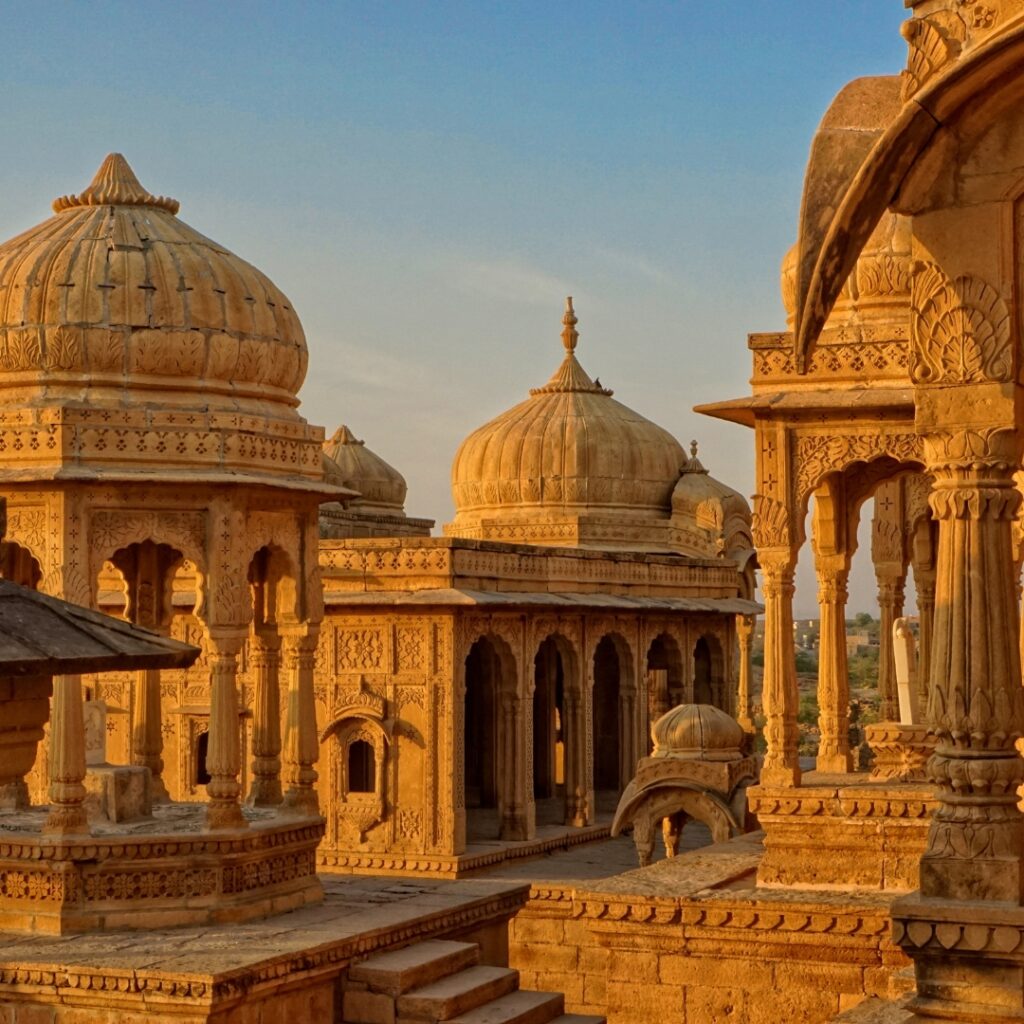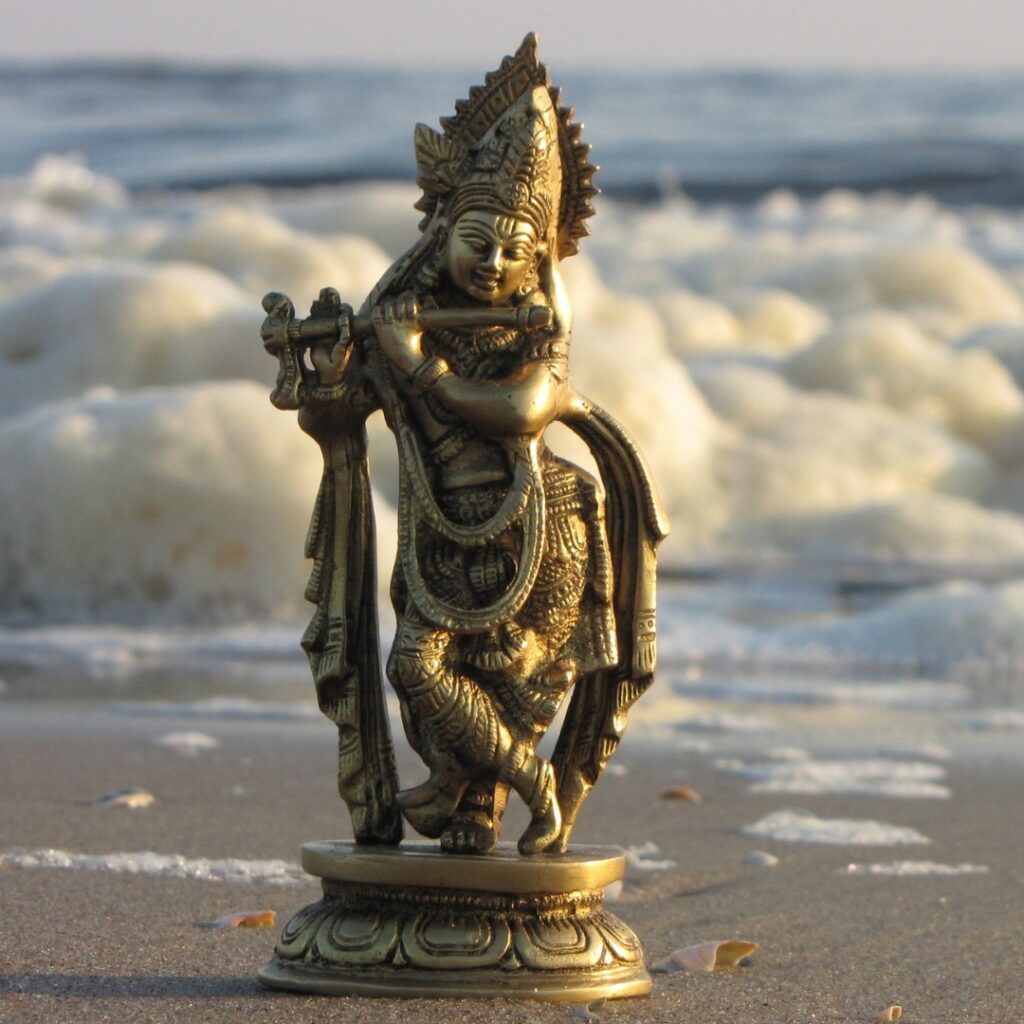A travel package to Dwarkadhish, centered around the Dwarkadhish Temple in Dwarka, Gujarat, would typically be a pilgrimage tour offering a combination of spirituality, history, and cultural exploration.

DAY-1
Arrival in Dwarka, Dwarkadhish Temple darshan, and Gomti Ghat visit.

DAY-2
Nageshwar Jyotirlinga, Bet Dwarka, and Rukmini Temple.

DAY-3
Optional trip to Somnath or free time for leisure and local shopping.
Destinations
- Dwarkadhish Temple
- Bet Dwarka
- Nageshwar Jyotirlinga
- Rukmini Devi Temple
- Gomti Ghat
- Sunset Point (Dwarka Beach)
Inclusions
- Accommodation in 3-star or premium hotels
- Daily breakfast and dinner
- Guided temple tours and darshan
- Private vehicle or group transport for sightseeing
- Pick-up and drop-off from the nearest airport or railway station (Rajkot/Jamnagar)
Best Time to Visit
Winter Season (October to February): Comfortable weather for temple visits and exploring the region.
Historical Background
Legendary Origins:
- According to Hindu mythology, the temple marks the site of the ancient city of Dwarka, which Lord Krishna established as his kingdom after leaving Mathura.
- The original city of Dwarka is believed to have submerged underwater after Lord Krishna’s departure from the mortal world.
Construction:
- The temple’s origins are attributed to Vajranabh, Lord Krishna’s great-grandson, who is said to have constructed the first shrine over 2,000 years ago.
- The current temple structure is believed to have been rebuilt and expanded during the 15th-16th centuries CE.
Architectural Style:
- The temple is a five-storied structure made of limestone and sandstone.
- It stands on 72 ornately carved pillars and follows the Chalukya style of architecture.
- The shikhara (spire) of the temple rises to about 78 meters, with a massive flag hoisted on it, symbolizing the temple’s religious significance.
Renovations and Patronage:
- Over the centuries, the temple has undergone renovations by various rulers and devotees. Significant contributions were made by the Solanki and Vaghela dynasties, among others.
- During the British colonial era, the temple’s prominence was revived as part of a broader interest in India’s ancient heritage.
Cultural and Religious Significance
Char Dham:
- Dwarkadhish Temple is one of the four sacred Char Dham pilgrimage sites, along with Badrinath, Puri, and Rameswaram.
- It represents the westernmost point of the Char Dham circuit.
Temple Deity:
- The main deity of the temple is Lord Krishna, worshipped here as Dwarkadhish, or “King of Dwarka.”
- The idol is made of black stone and is about 2.25 feet tall, depicting Krishna in his regal form.
Rituals and Festivals:
- The temple is a hub of religious activities, with daily prayers, aarti ceremonies, and bhajans (devotional songs).
- Janmashtami, celebrating Lord Krishna’s birth, is the temple’s most prominent festival, attracting thousands of devotees from across the country.
Mythological Importance:
- Dwarka is mentioned in several ancient texts, including the Mahabharata, Harivamsa, and the Puranas, highlighting its significance as a sacred city.
Submergence and Excavations
Marine archaeology has revealed submerged structures near Dwarka, believed to be remnants of the ancient city mentioned in Hindu scriptures. These findings have further cemented the temple’s legendary connection to Krishna’s kingdom.
Modern Importance
- The Dwarkadhish Temple is not only a spiritual center but also an architectural marvel that attracts pilgrims and tourists worldwide.
- Managed by the Gujarat government and temple trustees, it remains a vital cultural and historical monument.
This blend of history, mythology, and devotion makes the Dwarkadhish Temple one of India’s most significant religious landmarks.
